METZ – BEAUTIFUL CAPITAL OF THE LORRAINE REGION
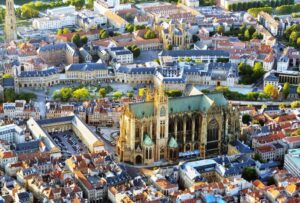
The graceful capital of the Lorraine, the historic city of Metz lies barely 60 kms north of Nancy in the north east of France, and less than a 2 hour drive across to the German border. Sitting astride the confluence of the Moselle and Seille rivers, Metz is one of the most rewarding destinations in France, with beautiful historic riches and heritage that reflect its fascinating history. The city enjoys a vibrant cultural scene with various music venues, and one of Europe’s best Christmas markets.
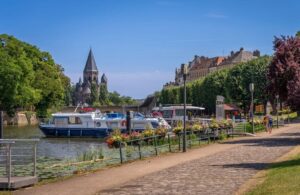
Metz is the perfect size for a short break. It’s very accessible from various parts of the country, and only 85 mins. from Paris by train. Its combination of lively shopping streets and delightful riverside walks makes it ideal for pedestrians and those in search of a mix of amusement, cultural experiences and relaxation. Enjoy the atmosphere in one of the many terraces, cafes and bars, and a very pleasant option for some relaxation is to take a boat trip on the Moselle to obtain a different perspective of the city. It goes without saying that good quality food is easy to find. A stroll through the covered market, a stop-off in one of the cosy Salons de Thé (tea rooms) or a treat from a patisserie will be tempting options.
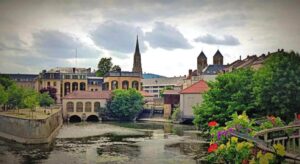
Metz has had a turbulent history, having been the centre of conflict between Germany and France. It passed from one country to the other, finally settling in France at the end of WW2. However, as Metz sits on the border of three countries (Germany, France and Luxembourg), you will find a fascinating mix of these cultures there. The city first sprang up in the hills of Sainte-Croix de la Citadelle. Later, it expanded to include some small islands on the Moselle river, which are now attached by numerous bridges, some dating back to the Middle Ages.
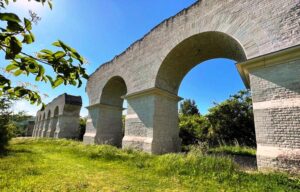
The recorded history of Metz goes back over 2,000 years, having originally been a Celtic oppidum before the conquest of Gaul by Julius Caesar in 52 BCE, becoming one of the principal towns of Gaul with a population of 40,000 making it an important Gallo-Roman city. After many raids by barbarians, it transferred to the Franks about the end of the 5th century CE, evolving into the capital of the Merovigian kings of Austrasia. After the Treaty of Verdun in 843, Metz became the capital of the Kingdom of Lotharingia and ultimately integrated into the Holy Roman Empire and granted semi-independent status. It was also one of the founding places of Gregorian chants.
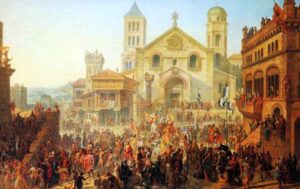
During the 12 century, Metz became a republic, and the Republic of Metz stood until the 15th century. After the signing of the Treaty of Chambord in 1552, Metz passed into the hands of the Kings of France. This change was not recognised by the Holy Roman Empire until 1648. Under French rule, Metz was selected as the capital of the Three Bishoprics, and became a strategic fortified town. It was chosen as capital of the Department of Moselle in 1789.
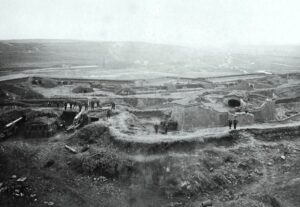
Although largely French-speaking, after the Franco-Prussian War and under the Treaty of Frankfurt of 1871, the city became part of the German Empire, and served as capital of the Bezirk Lothringen. Metz remained German until the end of WW1, when it reverted to France. However, after the German invasion of the Battle of France from 10 May to 25 June 1940, the city was annexed by Nazi Germany, but reverted one more time to France after the war. During the 1950s, Metz became the capital of the newly created Lorraine region.
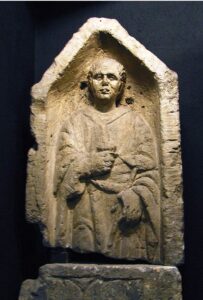
The extraordinarily varied history of Metz is reflected in its blend of fine historic monuments and sites. It has artefacts dating back to its Roman past, and today is best known for its large open squares lined with 18th century townhouses, its impressive cathedral and other religious monuments, and its fine museums and galleries.
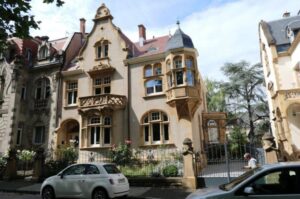
These attractions are spread across distinct districts that each have their own identity. The many fine and distinctive houses along Avenue Foch (originally called Kaiser Wilhelm Ring), mostly now used as small offices, are dramatic examples of quite different German version of Art Nouveau architecture, compared with what we had just seen in Nancy.
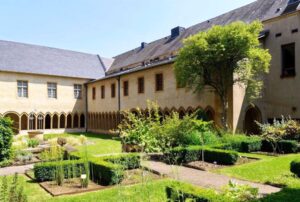
Sainte-Croix is the city’s historic heart. Its appearance and features are inspired by the medieval period, with its narrow, cobbled streets, mansions and iconic monuments such as the Cathedral, the Recollets Cloister, the Church of St Ségolène and the Trinitarian Church.
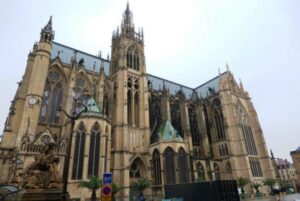
Start your visit to Metz in this quarter. Beginning on Place d’Armes with the Cathedral of Saint-Etienne, a beautiful Gothic church whose construction started round 1250, based on a pre-existing Romanesque church, and completed in 1522. The façade was rebuilt in 1903. Despite the long construction period, the cathedral is a successful blend of many different architectural styles, sculptors and stained glass makers. It’s one of the tallest cathedrals in France at over 41.41 metres. The cathedral has been dubbed La Lanterne du Bon Dieu (the Good Lord’s Lantern), due to its huge expanse of stained glass, said to be the largest in the world.
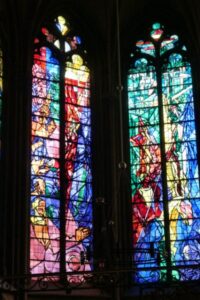
The stained glass windows are well-known throughout the world and include early works by Gothic and Renaissance master glass makers, while later windows are in the Romanticist, Tachisme and Cubist styles as well as Modernist designs by Marc Chagall dating from 1960-71.
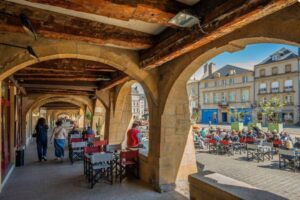
Nearby, you will see the large Place Saint-Louis, a medieval square with arcades, outdoor cafes and lined with grand medieval townhouses.
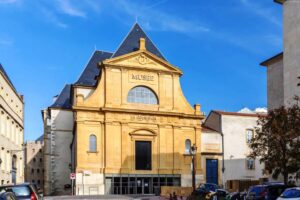
A stone’s throw from the Cathedral, don’t miss Musée de la Cour d’Or in rue du Haut Poirier. This is the metropolitan museum of Metz, which tells the story of the city’s almost 3,000 years of history. It’s well-known for its very fine collection of Gallo-Roman, Merovingian, medieval and fine arts collections , covering over 6,000 sq.m.
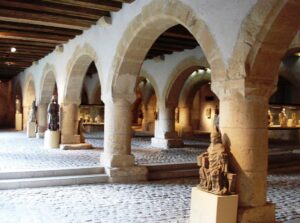
This gigantic and fascinating museum is somewhat like a labyrinth, incorporating the ancient Petites Carmes Abbey, the Chevremont granary and Église Trinitaires. Extension works in the 1930s revealed the vestiges of Gallo-Roman baths.
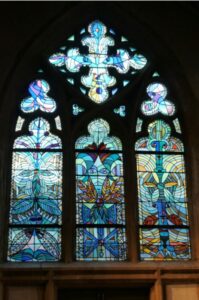
Aside from the cathedral, over in the medieval Outre-Seille district, in rue Mazelle is the Église Saint-Maximin de Metz, a Romanesque church dating from the 12th century. As well as its historic interest, the church houses the only known stained glass windows designed by Jean Cocteau, which were installed in the 1960s, and regarded as his last great masterpiece.

Also in this district, check out Porte des Allemands, an historic gate offering a glimpse into Metz’s medieval past. Not far from here is a large part of the city’s original ramparts that once surrounded it. Sections are still intact, and there is a walk that follows these for more than a kilometre.
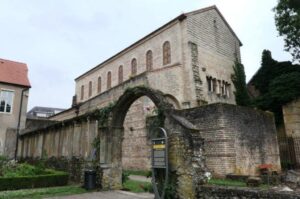
Over in the Citadelle district are the Law Courts, the former royal Abbey of St Arnould, the Templars’ Chapel, built between 1180 and 1220, and the Église de St Pierre-aux Nonnains, one of the oldest in France.
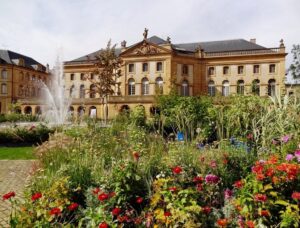
The elegant Les Iles district, spread across 3 islands in the River Moselle, is typical of the 18th century, with its Opera-Théâtre de Metz, the oldest to still be active in France, the Abbey of St Clement, Église St Vincent and bordering the river Place de la Comédie, lined with magnificent stone townhouses.

These islands are linked to the city’s other districts by many bridges in Classical architectural style. A wonderful view of the city is from the Moyen Bridge.
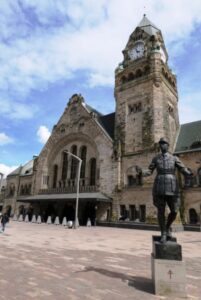
One unusual building in Metz is the railway station. An imposing neo-Romanesque building built in 1905-08, with sculpted panels depicting warriors, peasants and scenes of everyday life. It was built during the German annexation to transport goods and civilians but importantly, to be able to move large numbers of soldiers in the shortest possible time, a very useful strategy in terms of the approaching Great War. It also housed the emperor’s apartment and reception pavilion, reception halls, galleries and service rooms. It has repeatedly been voted the most beautiful railway station in France.
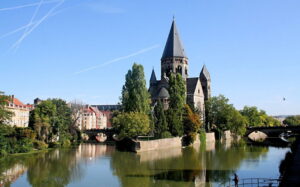
Close by is the Protestant Temple, the Temple Neuf, in the Rhenish Neo-Romanesque style, also built during the German annexation, from 1901-04. In the evening, the illuminated apse of the Temple is reflected in the Moselle.
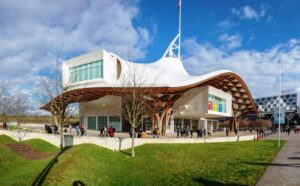
However, one of the city’s major attractions is close by, the Centre Pompidou-Metz, a sister institution to the Centre Pompidou in Paris. Constructed in 2010, this is a huge, impressive gallery for contemporary art, housing collections by such artists as Pablo Picasso, Henri Matisse, Georges Braque, René Magritte, Jackson Pollock and Andy Warhol.
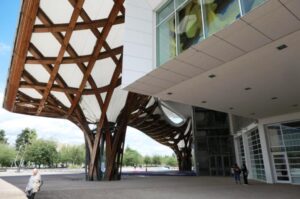
As well as its permanent collection, the Centre holds important special exhibitions every year. There’s an Auditorium used for films, conferences, live performances etc., as well as a ground floor café that opens onto a shady terrace. Note: closed on Tuesdays.
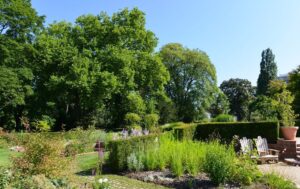
As a lovely place to catch your breath after exploring the city, head to the city’s Jardin Botanique, just outside the city’s ring-road, past the Imperial Quarter and on the edge of the Nouvelle Ville. Relax among the 80 different varieties of roses, herbs, flowers of every colour and fragrance, in addition to palms and enormous trees such as the 140 year old sequoia tree.
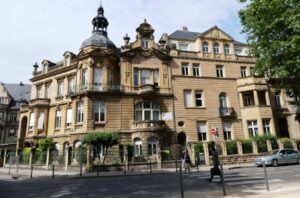
When you arrive in Metz, head to the city’s Office de Tourisme, which is very conveniently next to the Cathedral. Obtain a map of the city, and ask to have the main attractions mentioned here, marked for you.



Leave a Reply